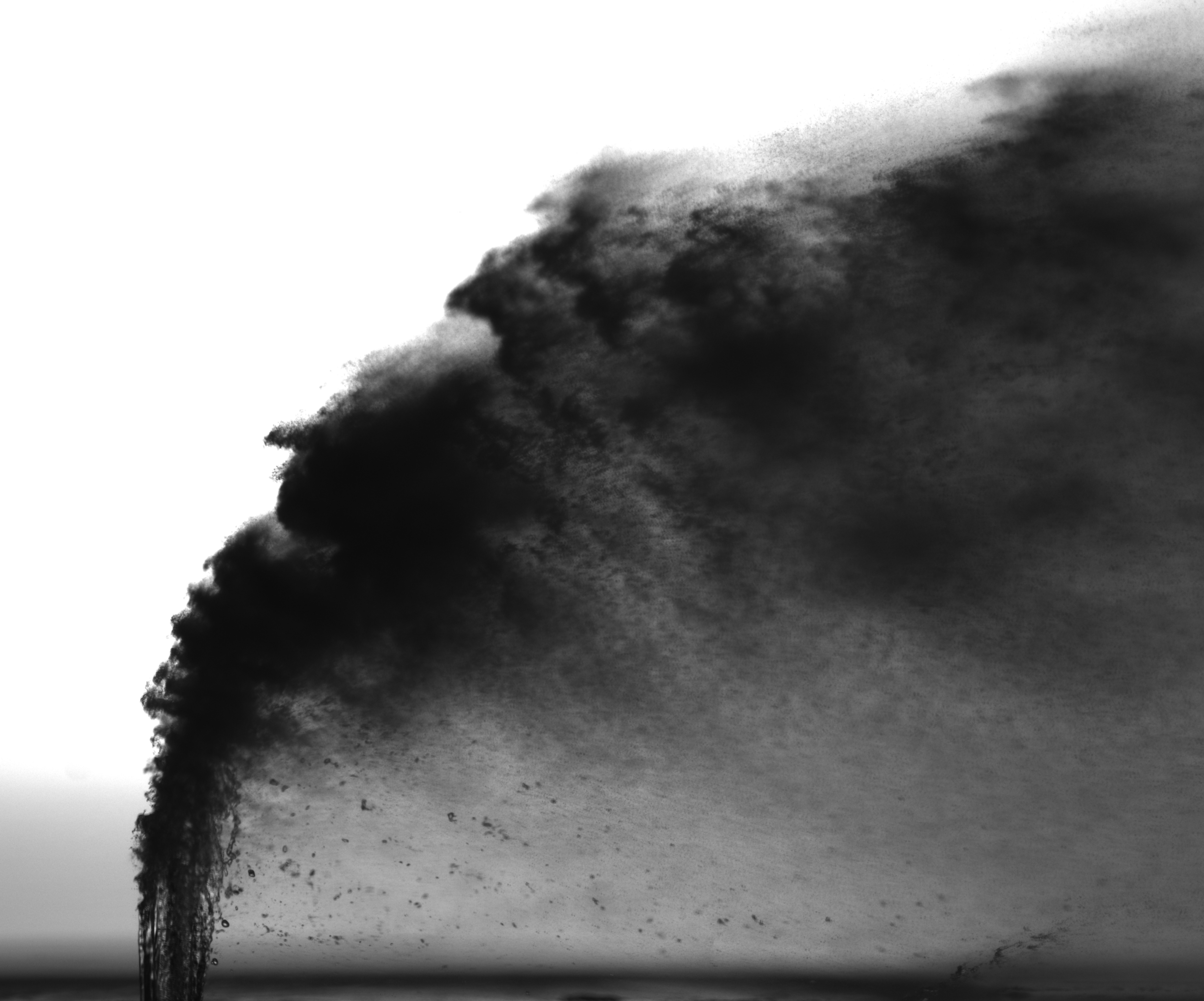No CrossRef data available.
Published online by Cambridge University Press: 07 July 2025

In the present work, we experimentally investigate the transverse injection of elliptic liquid jets into a supersonic cross-flow ( $M_\infty$ = 2.5). The primary focus is to understand the effect of injection orifice aspect ratio (
$M_\infty$ = 2.5). The primary focus is to understand the effect of injection orifice aspect ratio ( $\textit{AR}$ = spanwise/streamwise dimension), on the liquid jet breakup mechanism, the flow field around the liquid jet and the resulting droplet sizes formed downstream, for three
$\textit{AR}$ = spanwise/streamwise dimension), on the liquid jet breakup mechanism, the flow field around the liquid jet and the resulting droplet sizes formed downstream, for three  $\textit{AR}$ cases (
$\textit{AR}$ cases ( $\textit{AR}$ = 0.3, 1, 3.3). We find that the
$\textit{AR}$ = 0.3, 1, 3.3). We find that the  $\textit{AR}$ = 0.3 case has large unsteadiness in the spray core due to relatively large wavelength Rayleigh–Taylor (RT) waves formed on the liquid jet surface. However, the primary jet breakup occurs through Kelvin–Helmholtz (KH) instabilities formed on the large lateral surfaces, as in coaxial liquid jet breakup. This leads to a higher Sauter mean diameter (SMD) of the droplets in the spray core with a wider range of droplet sizes compared with the circular case (
$\textit{AR}$ = 0.3 case has large unsteadiness in the spray core due to relatively large wavelength Rayleigh–Taylor (RT) waves formed on the liquid jet surface. However, the primary jet breakup occurs through Kelvin–Helmholtz (KH) instabilities formed on the large lateral surfaces, as in coaxial liquid jet breakup. This leads to a higher Sauter mean diameter (SMD) of the droplets in the spray core with a wider range of droplet sizes compared with the circular case ( $\textit{AR}$ = 1.0). However, in the case of
$\textit{AR}$ = 1.0). However, in the case of  $\textit{AR}$ = 3.3, the RT waves are more intense and of smaller wavelength due to the large drag on the liquid jet, which results in a direct catastrophic breakup of the liquid jet by the RT waves. This results in a relatively steady liquid jet and shock structure with the formation of a fine spray and smaller droplets in the spray core than for the
$\textit{AR}$ = 3.3, the RT waves are more intense and of smaller wavelength due to the large drag on the liquid jet, which results in a direct catastrophic breakup of the liquid jet by the RT waves. This results in a relatively steady liquid jet and shock structure with the formation of a fine spray and smaller droplets in the spray core than for the  $\textit{AR}=1.0$ case. The study shows the importance of the orifice
$\textit{AR}=1.0$ case. The study shows the importance of the orifice  $\textit{AR}$ on the flow around, and the spray downstream of, the liquid jet injection into supersonic cross-flow.
$\textit{AR}$ on the flow around, and the spray downstream of, the liquid jet injection into supersonic cross-flow.